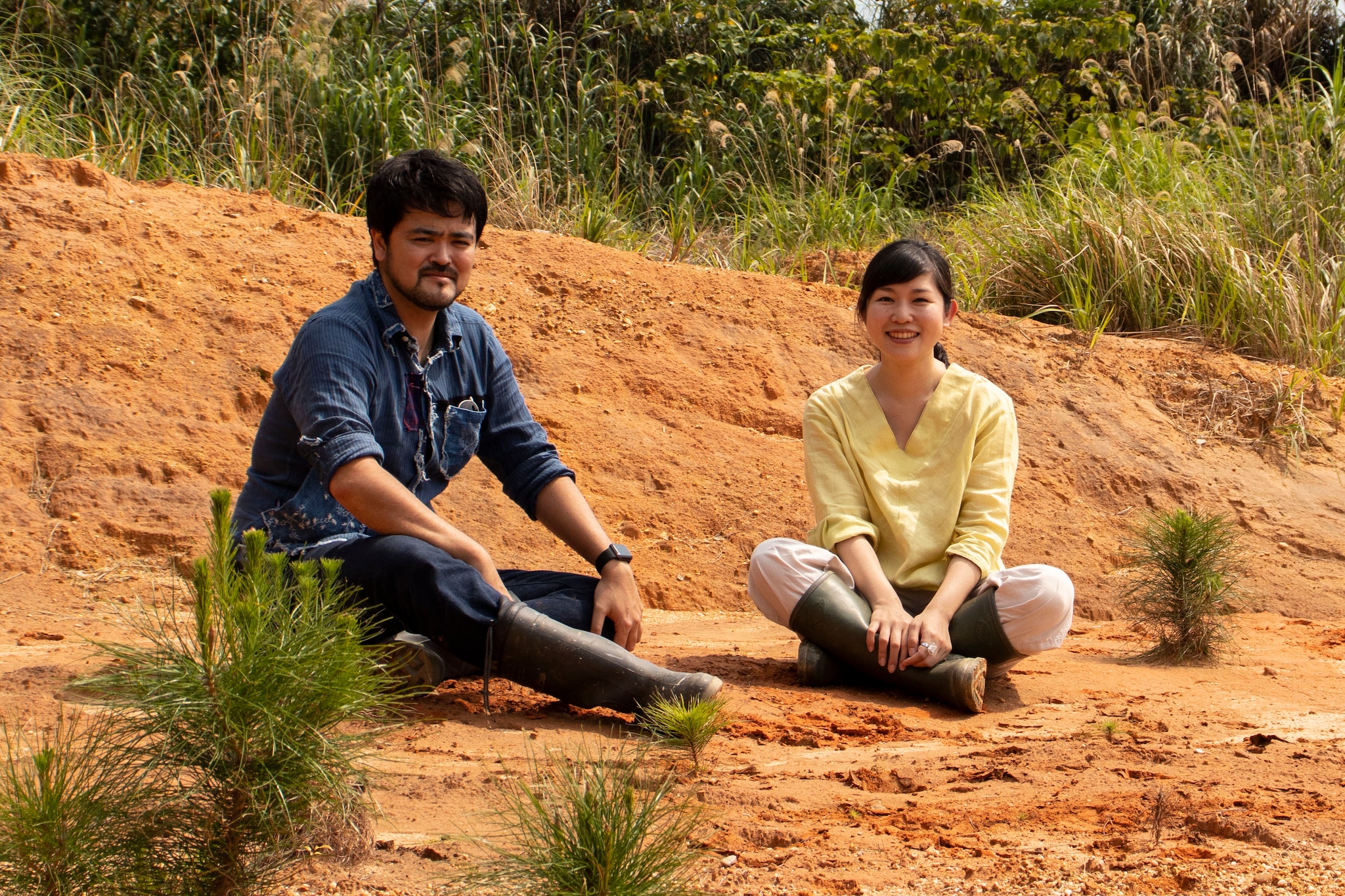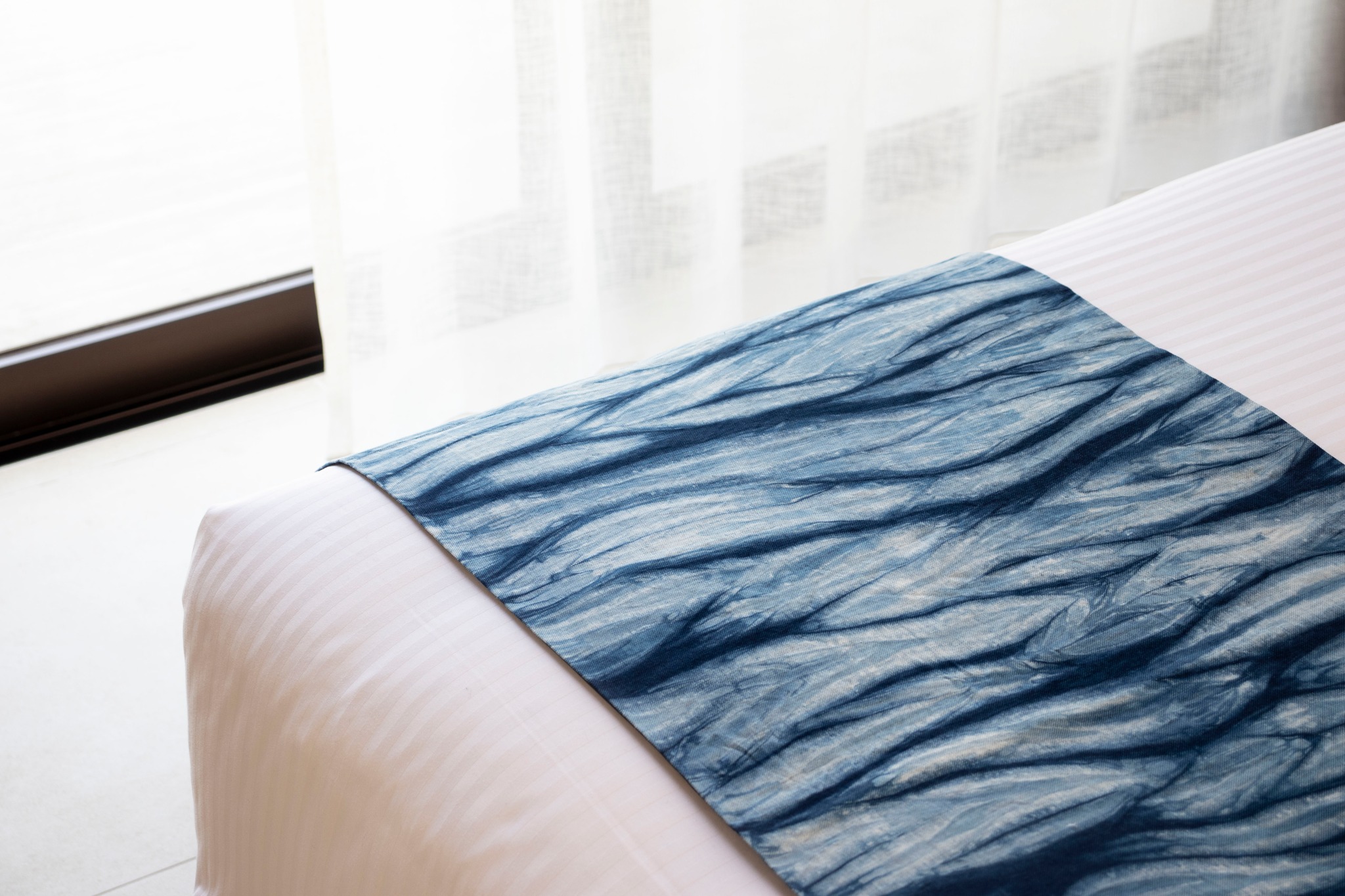2020/03/24 08:00
Fashion Designer/ LEQUIO : YOSHINARI KAKAZU

【PROFILE】Yoshinari Kakazu
Born
in Okinawa City, Okinawa Prefecture in 1984. His mother is a master of Ryukyu
dance and his father is a video cameraman. Because their house is next to the
Ryu bu Dojo, he could feel familiar with Okinawan folk songs and costumes of
colorful and glossy Bingata. A flea market is popular in Okinawa City, which
has a base. Mr. Yoshinari, whose height and foot size were large, used to go
shopping at the market for foreigners, and there was a military surplus uniform
at home which his grandfather and father used to use as farming and work
clothes. After graduating from high school, he went on to fashion school in the
prefecture. Innovative designs of resort wear and military uniform remakes were
highly regarded in and out of the prefecture. The name of LEQUIO, which was
launched at the age of 25, is the foreign language that remains in Okinawa, and
is derived from the fact that people from overseas called Ryukyu so during the
Great Voyage era. He named it in honor of pioneers who flourished trading with
foreign countries by crossing rough waves even though it is a small island
country. We asked Yoshinari, who will continue his ambitious activities on the
theme of "a story that goes beyond generations to the future," to
produce the textile dyed of Assam Indigo on Hideaway Resort the rescape, which
lies on Miyakojima east coast.
Aiming for Circulation-type of Apparel

Mr.
Yoshinari has been trying to commercialize Assam Indigo in-house from
cultivating it on new land and making dyes from grown Indigo plant, has started
4 years ago. It was once an industry that flourished mainly in the Izumi area
in Motobu-cho, Okinawa Prefecture, and gradually declined due to severe working
conditions and a lack of successors. "Our reason was that even though we
wanted to increase Assam Indigo dyeing products, we could not secure the raw
materials. We had a sense of future crisis again."
Mr.
Yoshinari started searching for land for cultivation immediately. However,
although there are countless abandoned cultivation areas, there was no
municipality that would accept young people with no experience. Finally, he
found the wild land of 19835 m2 by relying on the connections. In common sense
up to now, it could not be considered to be suitable for Assam Indigo
cultivation in this environment, but Mr. Yoshinari carefully studied the growth
conditions of the Indigo, and he judged that is worthwhile to try it here. He
spent two hours one way from home and start cultivating with his companions. he
said that the yield has been rising year by year. And said that it feels like
it has been accepted by local people recently.
To Establish a Science Based Farming Method

They
are planting and harvesting of Assam Indigo twice a year in the rainy season.
In their experiments, they found that they prefer breathable wetlands and a
moisturizing environment, and they are sensitive to ultraviolet light and
dryness. To briefly explain the mechanism that how Indigo is dyed, put the cut
leaves in water, leave them to rot, and extract the indigo which is the
component of the dyeing. The addition of slaked lime to the water causes the
indigo to precipitate, resulting in Doroai. Make the Doroai ready to be stained
with being fermented (Aidate). The clothes attached to the stain are green, but
when they touch the air, they gradually turn blue. However, it is said that
there are many parts that are not yet understood. such as what kind of microbe
ferments indigo, what the amount of slaked lime to extract the indigo
efficiently and finish it as a dye with high quality, and the characteristics
of Assam indigo itself as to. We are conducting joint research with professors
at the University of the Ryukyus for aiming to establishing an efficient
cultivation method and elucidation of the staining mechanism so that he can
connect the dyed indigo to the next generation.
Tell the Next Generation as a New Industry in the Region

Yoshinari's
100% of Assam Indigo denim brand "Ainery" has attracted attention
from outside the prefecture and from overseas, and shipments are increasing
year by year. He hopes to make some dyes here someday. It is said that this
area of acid soil is difficult to be imported from other countries and
difficult to create new industries because the growing plants are limited. When
making a dye from Assam Indigo, a large amount of lime water flows out as
sewage. However, by pouring the alkaline water into acidic soil, the soil may
be neutralized, and it may be possible to cultivate new crops that could not be
grown. If that would happen, he would like to make a dye factory on the hills
of rough ground. When a new industry starts, people will gather and need shops
and accommodation facilities. "The important thing now is to continue
anyway. Commercialize the grown indigo in apparel and make a track record.
Establish highly productive farming methods supported by solid evidence and
cultivate good quality indigo. When they are recognized, I think it would be
good if we could build up this area as a new indigo production area with local
farmers "
【Back Story】
~Fashion
Designer / Yoshinari Kakazu × su+ CHIHARU TANIGUCHI ~
Taniguchi
| While exploring art theme of "the rescape", it was the beginning
that I saw the beautiful gradation dyed dress of LEQUIO. The theme of
"Circulation" has naturally emerged from the image that night light
and whiteness morning. At that time, I saw at first glance a sample of
Ripple-Squeezing that Mr. Kakazu was taking on a new challenge, and I felt that
I could finally reach to the same theme.
Kakazu
| I struggled with the wall hanging art of Ripple-Squeezing. I looked at the
mock-up room under construction, and I enthusiastically said "I want to
dye big!", but it took longer than I thought to find a container for
further dyeing and a container to warm it. Since the encounter about 2 years ago,
we have exchanged various opinions Hotels like "the rescape", which
create a new culture and industry in Okinawa, should be followed later.
Ripple-Squeezing/ the rescape

▲Art theme of "the rescape" is "circulation". Produced bed throws and cushions with "Ripple-Squeezing" which images the waves coming back and returning, and a gradation dye that expresses the change in time when the night turns whiteness morning.

▲In modern furniture, cushions of Ripple-Squeezing add as organic atmosphere. Indigo-dyeing fades over time with hitting sunlight, but he thinks it as a kind of nature, and decides to adopt.

▲Hope you to go to sleep in the sea feeling with the bed throw of Ripple-Squeezing.

